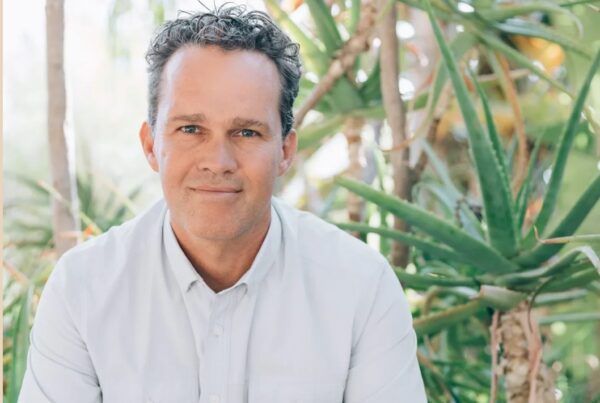COVID-19 has shown us again that despite the facts around climate change and water scarcity, industry is still reverting to a focus on short-term financial gains. Laying aside the importance of sustainability and the damage to our environment in the long run. You could say this is particularly true of the fashion industry. And who equates fashion, water and health together? Well we do. Because the resources used in the fashion industry to bring clothes to consumers, places a massive burden on our water resources and longevity. Here’s what you need to know.
The Business Of Fashion Versus The Planet
The Future Of Fashion Is Sustainability
![water fashion [longevity live]](https://longevitylive.com/wp-content/uploads/2020/09/pexels-artem-beliaikin-994523-scaled-jpg.webp)
Since we experienced lockdown, the fashion industry took quite a knock. This is because consumers no longer needed to shop for new clothing as they were staying at home the majority of the time. According to Business Insider, clothing retailers across the world have had a terrible time.
So it makes sense that many retailers might be chasing short-term quick fixes in a race to repair the financial damage. After all, we’ve spent a large portion of this year staying in our sweatpants or pajamas.
No Reason For Glamorous Fashion
However, the pandemic has made many of us question the way we consume fashion. Remember the horrific collapse in 2013 of the Rana Plaza garment factory? Ever since then, different movements sparked around the world demanding more transparency and accountability across the industry. Fashion Revolution is a big and strong labor movement in the global fashion industry. This global fashion industry works to conserve precious resources and regenerate ecosystems. They focus on the long-term goal to bring an end to human and environmental exploitation in the global fashion industry. Rather than the short-term benefit of making more money. Better yet, safe, and dignified working conditions with living wages for all people in the supply chain.
Water Pollution Is Not A Short-Term Fix
We all know about water scarcity, but have we really considered how what we wear will impact the world’s water resources? Water should be an increasingly important issue for the fashion industry. However, most of the industry appears blind to the risks of water pollution and is failing to tap into water-related business opportunities.
A new report claims that water pollution is an ‘invisible crisis.’ Interestingly, the World Bank says through its excessive water usage, the apparel and textile industry is a major contributor. In 2015 alone, the sector used 79 billion cubic meters of water. Meanwhile, UN estimates suggest that globally, 80-90% of wastewater is returned to the environment untreated. That’s frightening. Moreover, the fashion and textile industry majorly pollutes water at all stages of the value chain. We’re so focused on how much we can gain short-term, that we’ve totally forgotten about the importance of setting up our future.
The Invisible Crisis (Short-Term And Long-Term)
This happens from the agricultural runoff from cotton fields which causes algal blooms that choke rivers. The dying process releases a cocktail of toxic chemicals as well as washing clothes that release microplastics. We cannot go on focusing purely on short-term gains when it is clear that our planet and well-being are at stake.
Studies clearly show how low awareness and transparency are within the fashion industry. We see this, despite the fact that companies face material risks from water pollution. These risks include regulatory penalties or losing their social license to operate, and damage to their brand image. Therefore, it’s clear that whatever we can gain in the short-term is more important.
Only Gap, H&M, and Kering seem to be recognizing that water pollution is a risk across every stage of the apparel value chain. This is why we feel it’s necessary to help expand awareness and hopefully help more fashion brands jump on board.
What Can Fashion Leaders Do In The Short-Term?
It might be challenging for us to always think about the long-term because it seems so far away. However, in reality, it’s really not because we’re already feeling the effects.
![water fashion [longevity live]](https://longevitylive.com/wp-content/uploads/2020/09/pexels-godisable-jacob-1252982-scaled-jpg.webp)
Concerns about plastic waste peaked in 2019. However, H&M was the only reporting company to mention microplastics or microfibers in their disclosure. The washing of synthetic textiles is one of the primary sources of microplastics in the aquatic environment. Microplastics can damage aquatic ecosystems and even accumulate in human body tissue.
Cate Lamb, Director of Water Security at CDP says the pressure is mounting for fast fashion to clean up its act when it comes to water pollution. Investors, regulators, customers, and consumers alike are all calling for change. The industry was hit hard by the COVID-19 crisis this year. The temptation is there to prioritize short-term gains. However, the road to a resilient recovery lies in embracing sustainability and circular economic practices. This is the direction of travel and the companies leading the way will be best prepared for the future.
Short-Term Goals Won’t Help the Water Crisis
Fewer than a quarter of the companies that responded to CDP’s questionnaire have set targets or goals to cut water pollution. While just 6% monitor and report on their progress. Yet CDP says that companies reported more than $180 million of business opportunities related to cutting their water pollution.
The director of Supply Chain Sustainability at Gap, says we must focus not only on reducing water consumption in our manufacturing operations. This is something they’re already working towards. But also in raw material cultivation and customer product water use. According to Value Walk, Gap is also committed to improving water access and quality in the regions where it operates. Water is a context-based, localized issue and the industry will need to continue to work with stakeholders in key water basins across its value chain. This includes the communities that are impacted by their water usage.
Water, Fashion, And Sustainability
This is what Marie-Claire Daveu, chief sustainability officer at luxury goods producer Kering says. She’s hyper-aware of the importance of acting now in the short-term to achieve the long-term health of our planet. She says because tanneries use large amounts of water, they require special wastewater treatment measures. They have been working with their suppliers to improve processes and implement programs to protect the environment all along their supply chain. This is great news.
Apparently, consumers are thinking in the short-term too when it comes to buying. A McKinsey survey suggests that 66% of U.S. consumers now consider sustainability when making a luxury purchase. Also, younger generations are more willing to pay higher prices for products that prove to have a minimal impact on the environment.
Here’s What You Can Do Short-Term
The point is for us all to do our part. You don’t have to buy 100% eco-friendly clothing every single time. However, we know this won’t be a quick fix, and whilst it’s important big fashion brands take the lead in this. Consumers play a huge role in the matter as well. When you start to learn what’s more valuable in the short-term for our longevity, we can start to embrace sustainable fashion more. However, you need to understand that sustainable fashion is more than about shopping ethically and being minimalist with your wardrobe. Better yet, it’s about embracing sustainability as a healthy lifestyle choice that could see us living on a healthier and longer-lasting planet.
Rachel Coning-Beale explains that, as a result of Covid-19, thrifting as a means of sustainable shopping is growing noticeably this year. This is also something you can work on in the short-term because you can do it almost instantly. She says that online second-hand shopping will grow by 27% in 2020, and the broader retail sector will shrink by 23%. In the same article, thredUP CEO James Reinhart said that the pandemic has closed down much of the economy. Therefore, consumers have felt the financial knock and seek value for their money spent. The same thing happened with the financial crisis of 2008-2009. Some consumers are shopping second-hand for the first time during COVID-19.
A new way of shopping called thrifting or shopping second-hand can slow down the pace of wasteful manufacturing efforts. All of this can be done in the short-term and encourages more ethical consumption of clothing. Moreover, thrifting has a lot of environmental benefits like reducing water footprint and using fewer chemicals. We’re also seeing Instagram Influencers taking to thrifting and circular fashion. It’s essential for these influencers to start educating their followers in the short-term about sustainability. This is because it’s an opportunity to raise awareness, constantly.
![water fashion [longevity live]](data:image/svg+xml;base64,PHN2ZyB3aWR0aD0iMSIgaGVpZ2h0PSIxIiB4bWxucz0iaHR0cDovL3d3dy53My5vcmcvMjAwMC9zdmciPjwvc3ZnPg==) Repurposing Clothing
Repurposing Clothing
Many small fashion businesses are taking part in repurposing leftover stock that hasn’t been sold. Most of it is donated to charity instead of being disposed of. Leftover denim items are distributed to a smaller company, which repurposes them. The packaging needs to all be biodegradable and easily recyclable. Clothing items should be sourced ethically too. Bigger fashion brands need to learn from smaller businesses how to be more sustainable and start practicing these methods in the short-term.
Sustainable trading and selling need to be a priority. Somehow ‘sustainability’ seems to be a secondary selling point, instead of a direct focus. Also, sustainable fashion is not a trend that will just die out. It’s a worldwide necessity for our survival and longevity on this planet. The more pages that start popping up on Instagram, the bigger the marketplace gets and more people start to realize how fast fashion has impacted the environment. Fashion should be more than about making a short-term profit.
Therefore, do your best to get educated on your fashion brands and know the importance of sustainable fashion. Support the cause by looking into initiatives where you can work with organizations or companies that combat pollution in fast fashion. Their focus shouldn’t be on short-term profits. There are even small brands using ocean plastic and recycled items as a means to create garments.
Read More
Fashion brands, beauty, and sports industries are finally starting to make a difference in our environment. The effect of fast fashion and plastic wastage is taking a toll on our sea creatures. It’s time that the culprit brands and our communities come to the party.
References
Out Of Fashion – The Hidden Cost Of Clothing Is A Water Pollution Crisis. Forbes. https://www.forbes.com/sites/mikescott/2020/09/19/out-of-fashionthe-hidden-cost-of-clothing-is-a-water-pollution-crisis/#4f755c1b589c
The future of fashion? Sustainability is the word. Daily Maverick. https://www.dailymaverick.co.za/article/2020-09-08-the-future-of-fashion-sustainability-is-the-word/
SUSTAINABLE INVESTING? JUST 1 IN 10 FASHION COMPANIES SHOW AWARENESS OF WATER POLLUTION. Value Walk. https://www.valuewalk.com/2020/09/fashion-companies-water-pollution-awareness/



![water fashion [longevity live]](https://longevitylive.com/wp-content/uploads/2020/09/pexels-artem-beliaikin-1103511-320x213.jpg) Repurposing Clothing
Repurposing Clothing

![women [longevity live]](https://longevitylive.com/wp-content/uploads/2020/01/photo-of-women-walking-down-the-street-1116984-100x100.jpg)










